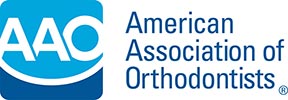
When all 32 teeth line up straight and create a perfect bite, it is a beautiful thing in the world of orthodontics. Unfortunately, this doesn’t happen naturally very often. In fact, only 35% of adults have perfect teeth. It is more common, therefore, for patients to suffer from misaligned teeth or a poor bite (or malocclusion). Fortunately, there are a number of strategic orthodontic treatment techniques to correct teeth that have failed to emerge in an ideal way.
Do you have an orthodontic concern? Here are the most common types of misalignment that we treat at Schatz Orthodontics:
Gapped Teeth
Gaps or spaces between teeth, also known as diastemata, are a leading cosmetic dental concern. Gapped teeth can be caused by a number of factors, ranging from thumb sucking to abnormal jawbone growth. Unsightly spaces can also develop when a missing tooth is not replaced. Correcting gapped teeth can help patients avoid gum problems while gaining a more attractive smile.
Overbite
An overbite occurs when the upper teeth present an excessive overlap of the lower teeth when biting. This type of malocclusion is commonly caused by genetics, uneven jaw growth or bad habits such as thumb sucking in childhood or nail-biting later in life. Without treatment, an overbite can threaten oral health by causing TMJ problems as well as lower teeth wear and gum irritations.
Underbite
Underbites are typically present at birth, caused by a misaligned jaw. However, missing teeth upper teeth and poor chewing habits can also contribute to an underbite. If an underbite is left untreated, it could lead to painful jaw symptoms due to excessive pressure on the jaw joint. An underbite may also result in premature wear and tear on the teeth.
Open Bite
An open bite is described when the front teeth of the upper and lower jaw do not touch each other when the mouth is closed. The most common culprit is thumb sucking. However, an open bite can also result from abnormal jaw growth. Not only are smile aesthetics affected, but the patient can suffer from speech impairment such as lisping as well as disruptive jaw problems.
Overly Crowded
A common reason for a crooked smile is overcrowding, which occurs when there is not enough room within the jaw for all of the teeth to fit properly. Overly crowded teeth can be difficult to keep clean, which can lead to oral health issues such as gum disease, tooth decay and bad breath due to excess plaque accumulation. Crowded teeth can worsen over time if not corrected.
Crossbite
If both the upper and lower jaws are misaligned, a crossbite can be present. A normal bite is when the upper teeth are slightly over the lower teeth. In a crossbite, the position of one or more teeth is reversed, causing an underbite or overbite in the front and/or sides of the mouth. A crossbite can threaten the cosmetics and function of your smile, including chewing problems and jaw pain.
If you can identify with one or more of the above orthodontic issues, we can help. Call our San Antonio office today.
Posted on behalf of
22610 US Highway 281 North, Suite 201
San Antonio, TX 78258
Phone: (210) 494-4606







